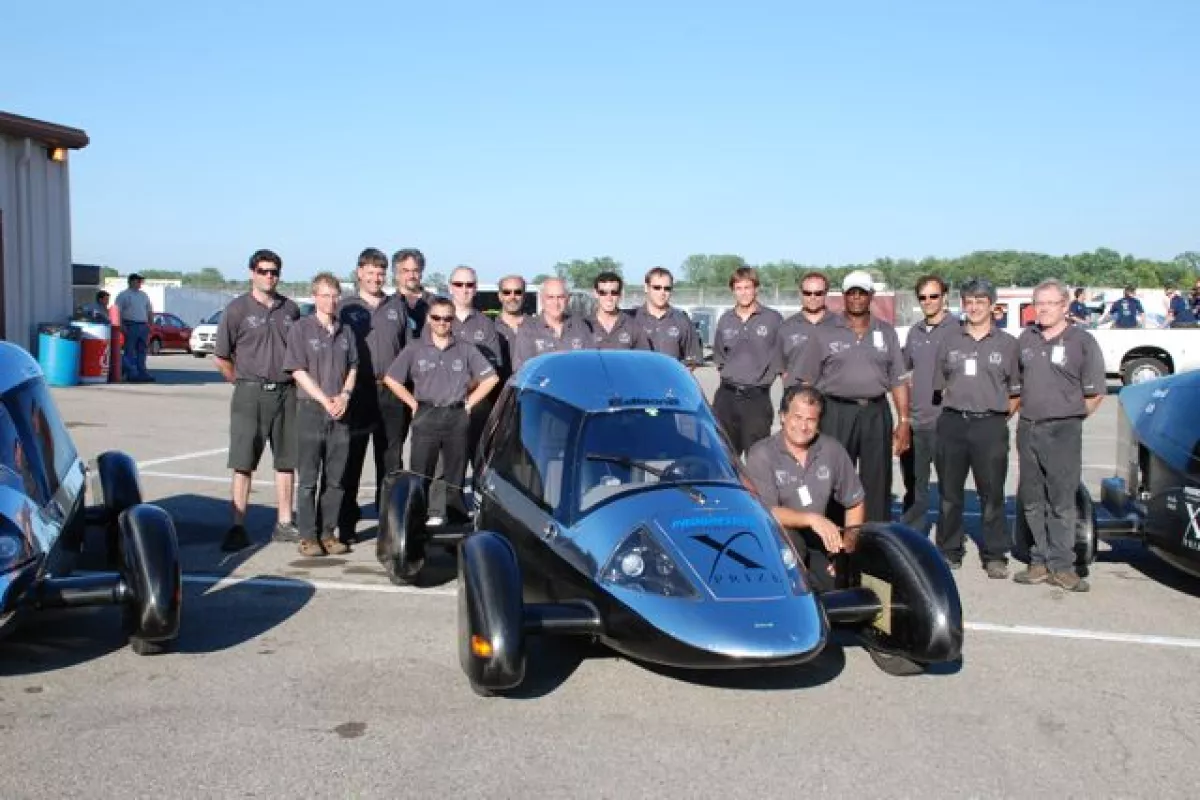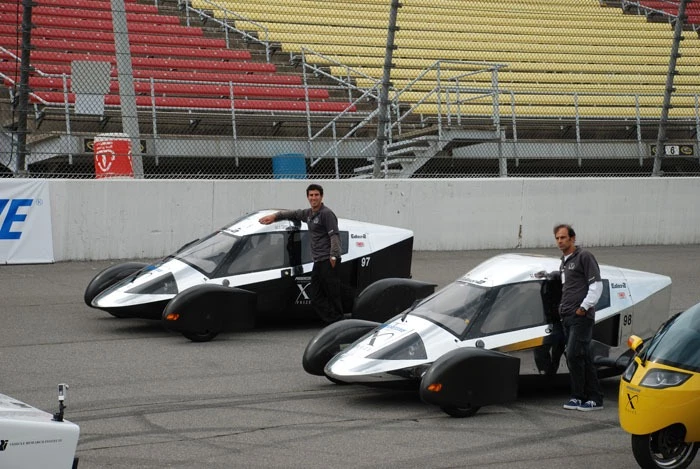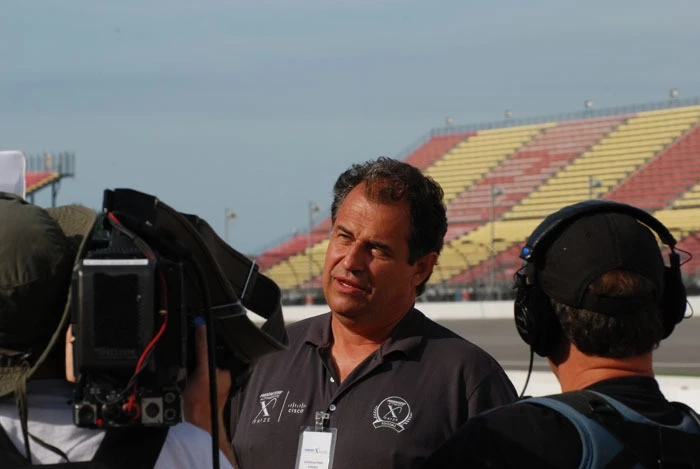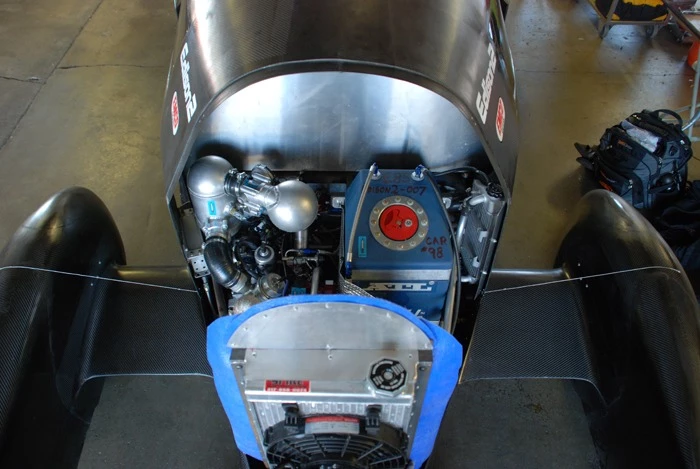The Edison2 team took away US$5 million for winning the Mainstream class of the Automotive X-PRIZE last week with its 100+ MPG car of the future – Very Light Car #98. Gizmag caught up with team leader Oliver Kuttner after the ceremony to find out what's next for Edison2.
The Progressive Automotive X-Prize required vehicles to attain a fuel economy of at least 100 miles-per US gallon equivalent (2.35L/100km), while also remaining practical for real-world use. The Mainstream class of the event was particularly significant, as vehicles had to attain twice the range of vehicles in the Alternative class, and would presumably be the vehicles most likely to find acceptance with a large number of consumers. and the vehicle that made it possible, the Very Light Car.
First, a little about the car itself. Edison2 began with four versions of the Very Light Car entered in the competition, two in the Alternative class and two in Mainstream. The rear-wheel-drive four-seater car that won the Mainstream, #98, attained 102.5MPGe (2.29L/100km) and weighs just 830 pounds (376.48 kg). All of the Very Light Cars are powered by a rear-mounted, 1-cylinder 250cc turbocharged combustion engine. In the case of #98, that engine generates 40 horsepower, for a reported top speed of over 100mph (161km/h) and a maximum range of over 600 miles (966 km) on one tank of E-85 ethanol.
The reason it won, Kuttner explained, was the “brutal efficiency” of its light weight and aerodynamics.
“Insulation for the building industry is what we are for the car industry,” he told us. “It takes three-and-a-half horsepower for our car to go 50 miles an hour – that’s very little energy... We can build a brutally more efficient electric car, with a smaller battery, and we can build a brutally more efficient gasoline car.”
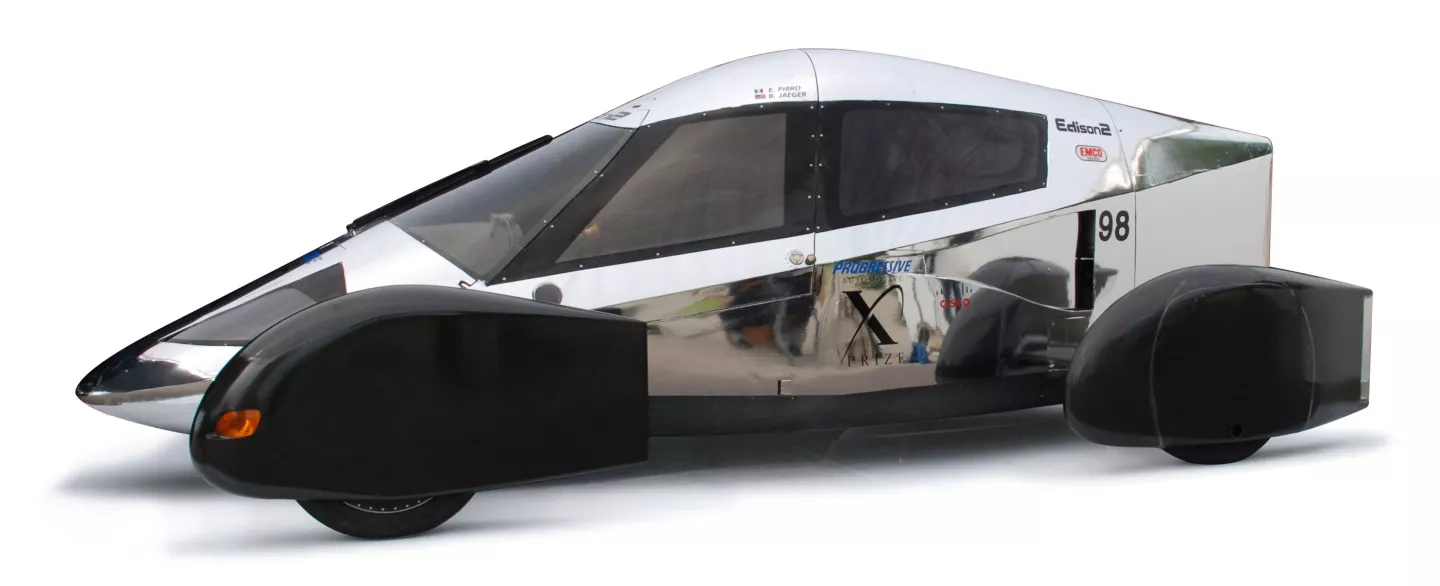
With the vast majority of the X-PRIZE vehicles being electrically-powered, however, one might wonder why Edison2 chose to go with a gas engine.
“Because the results are much more meaningful,” says Kuttner. “Anybody in the industry knows that you can get 100 miles per gallon by building an OK car with a good electric drive. Everybody in the industry also knows that if you can do 100 miles per gallon while meeting emissions with a car with four people in it, that’s almost impossible. So we did it because the real money isn’t the prize, the real money is what happens from now on. This is the starting line of our company.”
That point made, the production version of the car could very likely be a hybrid, or even a pure electric.
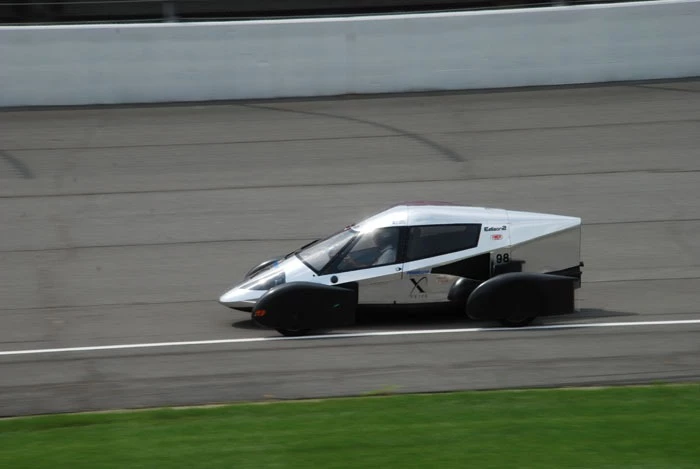
“By our estimates, we can improve on what we have by about ten percent right now,” he stated. “That said, we would give back a lot to make this car more mainstream, more consumer friendly. So what we really envision is a car that is quite normal. Although it looks very different, it’s quite normal in use.”
Yes, but... what about its “different” looks? Does he worry that consumers simply might not be ready for something that makes such a radical aesthetic statement?
“The three winners are drastic departures from the normal,” he noted. “For me, that speaks loud and clear. It’s not really wise for consumers to think [you can take a normal-looking car], stick an electric motor in it, and say ‘Oh, I’ve done it.’ It doesn’t work like that. In order to build a truly more efficient car, you must be prepared to depart from the normal.”
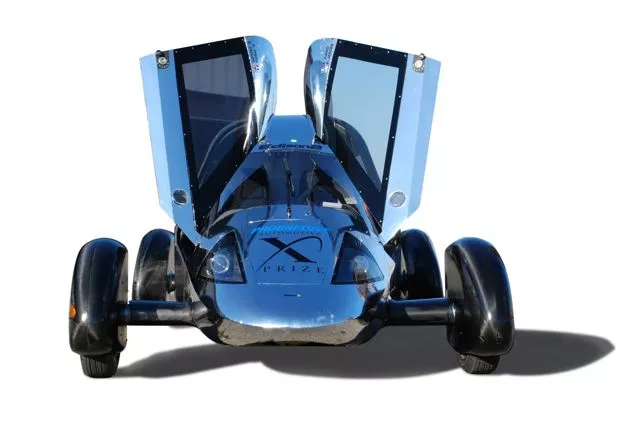
Judging by the reactions, especially from the younger generation, it seems like a lot of people are ready to make that departure. “I did not expect our car to have any consumer appeal in it at all,” he said. “I expected we’d have a lot of work to do in that direction, and we’re still doing a lot of work, but I can tell you right now, we would probably be able to sell somewhere between five and ten cars per day at this moment.”
Before you get too excited, Kuttner added that Edison2 is still “generations away” from a consumer model.
Congratulations to Oliver Kuttner and the Edison2 team... along with all the other dedicated participants.
